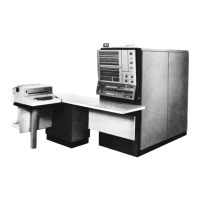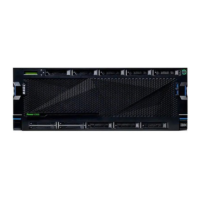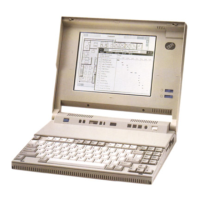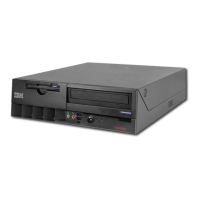r---------T----------T-------------------------------------------------,
I Name I
operationl
Operand
I
~---------+----------+-------------------------------------------------~
I I
LOCATE
I
INDGX
READ
VOLUME-LIST
BLOCK
FOR
I
I I
Check
Exceptional
Returns
DATA
SET
A.PAY(-3)
INTO
I
I
INDGX
I
CAMLST
I NAME,APAY"LOCAREA
MAIN
STORAGE
AREA
NAMED
I
I
APAY
I
DC
I
CL44'A.PAY(-3)'
LOCAREA.
LOCAREA
ALSO
CON-
i
I
LOCAREA
I
DS
I
OD
TAINS 3-BYTE
TTR
AND
I
I I
DS
I 265C 6-BYTE SERIAL
NUMBER
I
L
_________
~--
________
~
_________________________________________________
J
The
LOCATE
macro-instruction
points
to
the
CAMLST
macro-instruction~
NAME,
the
first
operand
of
CAMLST,
specifies
that
the
system
is
to
search
the
catalog
for
a
volume-list
block
by
using
the
name
of
a
data
set.
APAY,
the
second
operand,
specifies
the
main
storage
location
of
a
44-byte
area
into
which
you
have
placed
the
name
of
the
generation
index
and
the
relative
generation
number
of
a
data
set
in
the
generation
data
group.
LOCAREA,
the
fourth
operand,
specifies
a
265-byte
area
you
have
reserved
in
main
storage.
After
execution
of
these
macro-instructions,
the
265-byte
area
contains:
the
256-byte
volurre-list
clock
for
generation
data
set
A.
PAY(-3),
the
3-byte
relative
track
address
('ITR)
of
the
block
following
the
one
read
into
rrain
storage,
and
the
6-byte
serial
number
of
the
volume
on
which
the
block
was
found.
In
addition,
the
system
will
have
replaced
the
relative
generation
number
that.
you
specified
in
your
44-byte
area
with
the
data
sst's
absolute
generation
name.
§pecifying
a Name
Using
an
Alias
For
each
of
the
preceding
functions,
you
can
specify
an
alias
as
the
first
name
in
the
qualified
name
of
an
index
level,
data
set,
or
generation
data
set.
Each
function
is
performed
exactly
as
previously
described,
with
one
exception:
the
alias
narre
specified
is
replaced
by
·the
true
name.
§pecifying
by
TTR
You
can
read
any
block
in
the
catalog
by
specifying,
in
the
form
TTR,
the
identification
of
the
block
and
its
location
relative
to
the
beginning
of
the
catalog.
TT
is
the
number
of
tracks
defining
the
position,
relative
to
the
beginning
of
the
catalog,
of
the
track
on
which
the
block
to
be
read
resides;
R
is
the
identification
of
the
block
on
that
track.
(Formats
of
each
type
of
catalog
block
are
contained
in
Appendix
A
of
this
chapter.)
Example:
In
the
following
example,
the
block
at
the
location
indicated
by
TTR
is
read
into
main
storage.
The
specified
block
is
in
the
catalog
on
the
system
residence
volume.
r---------T----------T-------------------------------------------------,
I Name I
Operationl
Operand
I
t---------+----------+-------------------------------------------------~
I I
LOCATE
I
BLK
READ
A
BLOCK
INTO
MAIN
I
I
I
Check
Exceptional
Returns
STORAGE
AREA
NAMED
LOCAREA
I
I
BLK
I
CAMLST
I BLOCK,TTR"LOCAREA I
I 'ITR I
DC
I H'
5'
RELATIVE
TRACK
5 I
I I
DC
I
X'03'
BLOCK
3
ON
TRACK
I
I
LOCAREA
I
DS
I
00
LOCAREA
ALSO
CONTAINS
3-BYTEI
I I
DS
I
265C
TTR
AND
6-BYTE SERIAL
NO.
I
L
_________
~
__________
~
_________________________________________________
J
12

